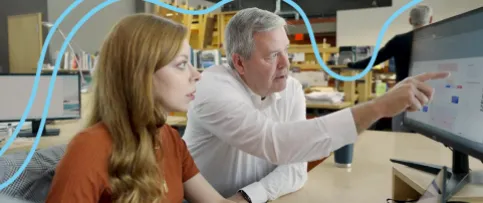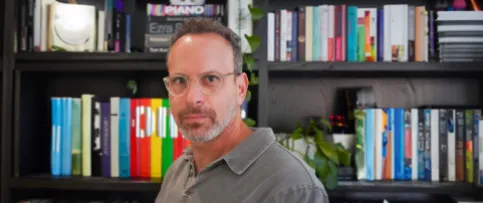We took some time to chat with Platte Architecture & Design architect and 2020 Re-Think Tank member Courtney Zunis about adaptive reuse in historic neighborhoods and her favorite project to date—right in the heart of Cincinnati. Zunis also shares her thoughts on the profession’s efforts to create more opportunities for minorities in the field, helpful advice for students thinking of pursuing architecture, plus more.
What is your earliest memory of architecture when growing up?
Architecture wasn’t really on my radar when I was a kid. In school, I liked math and science but also art and writing. In high school, I wrote a report on Antoni Gaudí (who is still one of my all-time favorite architects), and I was fascinated by his combination of physics and art. I realized that with a career in architecture, I would get to use both the artistic and analytical sides of my brain. This is still one of my favorite things about my work—the combination of design and problem-solving.
How did you pass all divisions of the ARE on your first try and in less than a year?
The Architect Registration Examination® (ARE®) is tough work. After seven years of architecture school, I was concerned that I would lose steam if I took a break, so I tried to get started with testing as soon as I could after graduating. I had a good amount of professional experience in early project phases from internships and co-ops, so I started with the corresponding tests—Programming & Analysis (PA) and Project Planning & Design (PPD). I stuck to a schedule and put together a study group at work to help hold myself accountable. After the first few tests, I got a feel for the testing system and the question types, so the last few were easier than the first. It was a long year and a lot of studying, but I was thrilled to get over that last hurdle and finally call myself an architect.
What are your thoughts on the ARE’s future online proctoring option?
I’m excited to learn more about this option. My experience on the NCARB 2020 Re-Think Tank really opened my eyes to the various obstacles that candidates can encounter on the path to licensure, and the exams are a big one—requiring a serious time and cost commitment. I was fortunate to get through the process relatively quickly, but that isn’t the case for everyone. If you are testing later in your career, balancing a family at home, live far away from test centers, or just don’t have much support or flexibility from your employer, the process can become unnecessarily difficult. I welcome all efforts to make the process more flexible or more comfortable for candidates.
You work at Platte Architecture + Design, which specializes in adaptive reuse within historic neighborhoods. How did you become interested in this area of practice?
One of my undergraduate architecture studios at Kent State University focused on adaptive reuse, and I loved the extra challenge of integrating layers of history with the program and systems of a modern building. I grew up in Cleveland and have lived in Cincinnati for the last six years, and their stories are similar to most Midwest cities—they were built up around industries and their populations peaked in the mid-1900s. This results in a lot of empty historic buildings with perfectly viable structures and much more intricate detailing and craftsmanship than most modern construction. Reusing them just makes sense to me. The process can be a puzzle at times, but in my opinion, the result is often more beautiful and interesting than new construction.
What is your favorite project you’ve worked on and why?
I just finished up the renovation of a 1950s diner car in Over-the-Rhine (the large historic district here in Cincinnati). It is a bit of an icon in the neighborhood and was one of the first projects that I carried all the way through from concept design to construction administration. We had a great team and a fun client and concept. One of my favorite things about the design is the use of color—the outside is bright pink and the interior looks like a candy shop. I like black and white as much as the next architect, but I think color is underutilized in our profession and I love opportunities to use it, especially to brighten up spaces and make them more playful.
How would you improve the profession’s efforts in ensuring that women, minorities, and young architects are provided with more opportunities to advance practice and licensure?
I think the profession is definitely moving in the right direction. We are seeing more women and minorities in the field than ever before, and from what I have seen, the diversity is generally welcome. One massive challenge moving forward is to ensure that this diversity can continue up through the ranks—the number of women and minorities in leadership positions is still disappointingly low. It’s critically important that young architects and designers have people to look up to and learn from who look like them and understand their struggles. Ideally, the leaders in the profession would accurately represent the field as a whole, but we still have a long way to go.
Why did you want to become licensed?
For me, it was the natural progression after completing my undergraduate and graduate degrees. I wanted to finish the process and call myself an architect. I’m not stamping drawings yet, but I plan to do so one day.
If you can share one piece of advice to high school students considering pursuing a career in architecture, what would it be?
I try to approach this topic carefully with high school students. The reality is that architecture (both in school and in the field) takes a lot of hard work. It is not for the faint of heart. But if you are passionate and excited about it, don’t let anyone stop you. There are few things more rewarding than watching your designs come to life.



